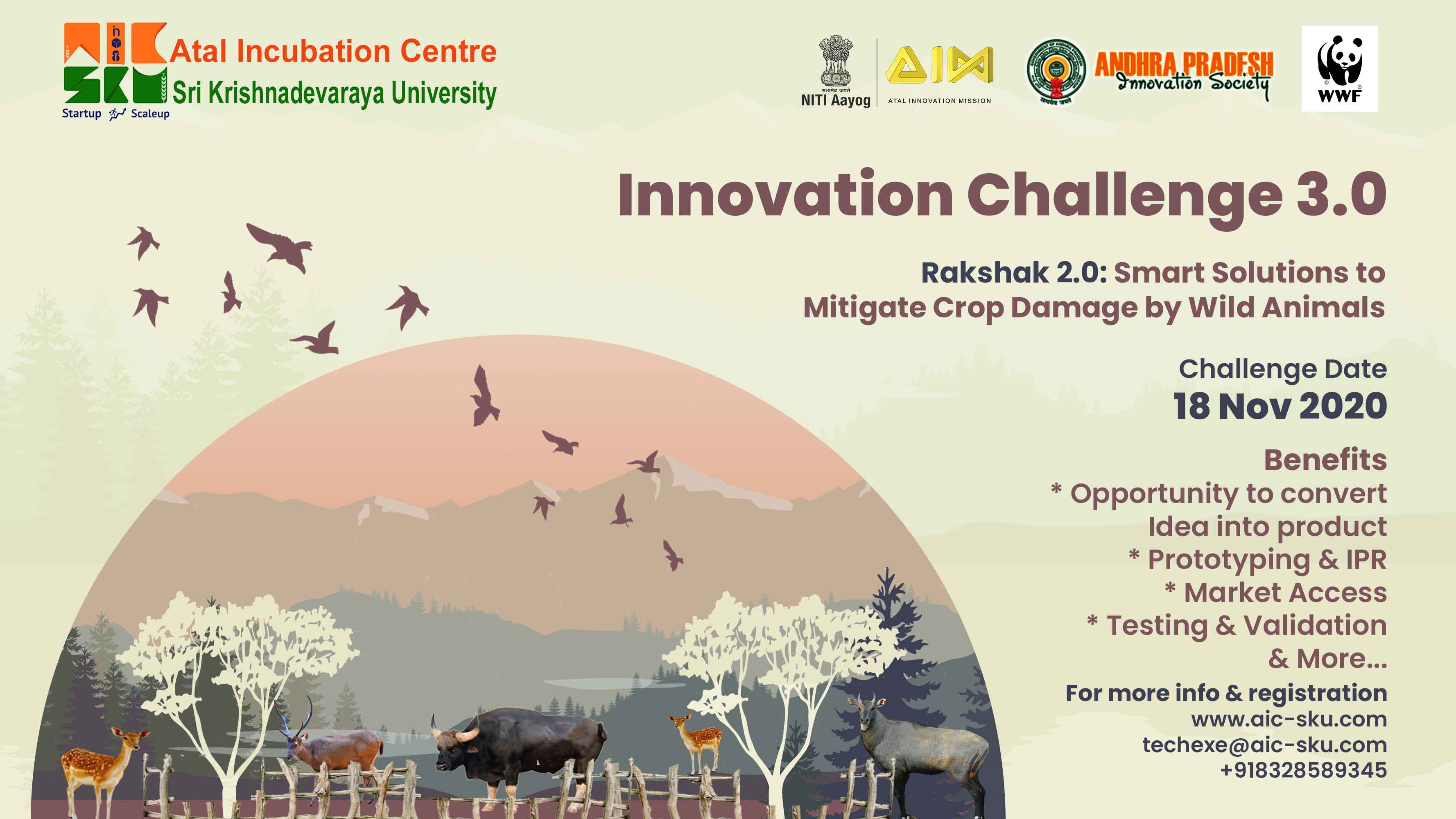Latest News

Innovation Challenge 3.O
2 November 2020Event
Given the extent of crop damage that happens around forest areas (and Protected Areas – National Parks, Wildlife Sanctuaries, Tiger Reserves, etc.) in most parts of the country, it is important that any mitigation measure is scalable and takes into consideration cost factor. For a mitigation method to be successful, if found effective, it should be replicable locally by people without incurring high costs to ensure the viability of the method.
The Problem
Crop damage due to wild ungulates (hoofed animals including deer, pig), monkey, etc. is common around forest areas in Madhya Pradesh, Maharastra and Chhattisgarh (Central Indian Landscape). People lose a large part of their crop to the wild animals that move out of the forest and raid crop-fields. The animals being protected by law (under Wildlife (Protection) Act, 1972) cannot be injured or killed in retaliation by the aggrieved farmer. Crop loss compensation by the government is also a tedious process and is not well implemented in most states.
The loss of crop after putting in a lot of hard work and finances makes people angry and sometimes leads to retaliation against the wildlife that raids the crop fields. This is done by way of the poisoning of water sources, putting up snares and leg traps, live electric wire, etc. The damage is at times co-lateral, as animals other than the crop-raiding ones, like tigers, leopards, etc., also get trapped and killed. Live electric wires have also caused death to both humans as well as animals like tigers, leopards and bears.
There is thus a need for a method that is non-fatal yet effective to guard against crop-loss to wild animals especially deer species, pigs and monkeys.









